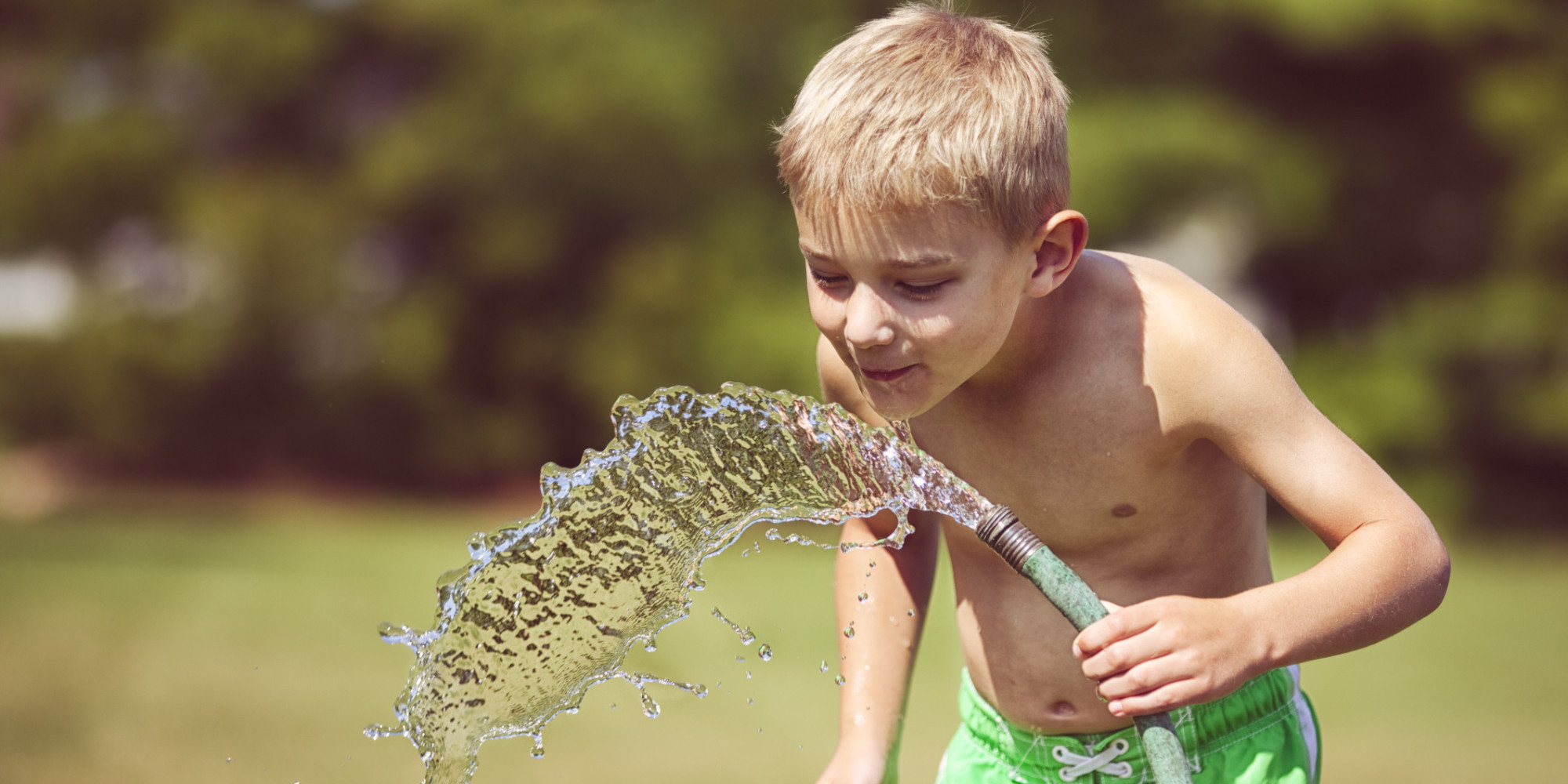In the heart of summertime, the idyllic scene of children frolicking in the yard often elicits nostalgic imagery. One quintessential aspect of this pastoral paradise involves children quenching their thirst directly from the garden hose. While such practices may evoke fond memories, contemporary parental considerations extend beyond mere reminiscence. The safety of this habit warrants a thorough examination, as concerns regarding chemical exposure and microbial contamination remain pressing. This article explores the contemporary realities of children’s interactions with garden hoses, encompassing both safety tips for parents and an exploration of health implications.
Water Sources and Quality
In many households, the garden hose serves as an accessible conduit to hydration, especially during the sweltering months. However, the quality of the water delivered through garden hoses may not match the pristine nature of its source. Water quality can vary significantly based on plumbing materials and environmental factors. Parents must recognize that many hoses are made from polyvinyl chloride (PVC) or other materials that may leach harmful substances, including lead and phthalates, when exposed to heat. Additionally, hoses left out in the sun can heat up, increasing the likelihood of leaching chemicals into the water.
In a landscape increasingly dominated by renewed awareness of environmental toxins, public health agencies have raised alarms over potentially hazardous substances. In particular, the presence of bisphenol A (BPA) in certain hoses compounds concerns, as BPA is known to disrupt endocrine functioning. Consequently, parents must consider both the composition of the hose and the water quality when determining whether it is safe for children to drink directly from it. Engaging with local water quality reports and assessing the material safety of hoses becomes essential in ensuring safe hydration for young, impressionable individuals.
Microbial Contaminants: The Hidden Risks
Aside from chemical contamination, microbial exposure remains a chief concern regarding drinking from the garden hose. The outdoor environment hosts a plethora of microorganisms, some of which can pose health risks. Bacteria, fungi, and other pathogens can proliferate in hoses that are improperly cleansed or stored. Consequently, a garden hose can quickly become a conduit for harmful organisms, particularly if it collects debris or is used in conjunction with fertilizers or pesticides.
Moreover, water stagnation can lead to algal blooms, dramatically altering the microbial landscape within the hose. These blooms can release toxins harmful to human health. Parents should consider the hygiene of the hose, ensuring it remains free from contaminants. Rinsing hoses after use, storing them properly, and avoiding contact with chemicals can mitigate microbial concerns. The cultivation of responsible habits becomes paramount in ensuring the well-being of children who may unwittingly partake in risky behaviors.
Teaching Responsible Hydration
As the guardians of familial health, parents have a vital role in educating children about safe practices surrounding hydration. While nostalgia may evoke scenes of carefree hose drinking as a symbol of summer joy, modern realities demand a nuanced understanding of safety. Children should be encouraged to drink from kitchen taps or filtered water systems, designed expressly for human consumption. This can help diminish health risks associated with untreated outdoor water sources.
Moreover, fostering an ethos of safety encourages children to appreciate the intrinsic value of clean water. Parents can engage their children in discussions about the importance of water quality and the potential risks posed by drinking from unregulated sources. To further facilitate hydration, parents should consider investing in portable water bottles. By emphasizing the importance of bringing water to outdoor activities, parents can instill responsible behaviors that prioritize health without sacrificing the joys of summer play.
Consumer Choices: Selecting Safe Hoses
For parents determined to balance nostalgia with safety, making discerning choices when selecting a garden hose becomes essential. The market offers a plethora of hoses with various materials and safety certifications. Parents should seek hoses labeled as free from harmful chemicals such as lead and BPA, with specifications indicating compliance with health safety standards. Understanding the materials used in the construction of hoses acts as a safeguard against chemical exposure.
Moreover, opt for hoses marked as drinking water safe. These hoses are designed specifically for potable water and endure rigorous testing to ensure safety for human consumption. Selecting high-quality, non-toxic hoses can create an environment where children can engage in summer fun without compromising their health. Engaging with manufacturers and seeking out certifications obtained through independent testing agencies reinforces this commitment to safety.
Encouraging Fun, Safe Activities
While the garden hose may evoke cherished memories of carefree summer days, parents possess the power to recreate joy while prioritizing safety. Selecting fun, engaging outdoor activities can shift the focus away from drinking directly from the hose. Host water-themed playdays where the focus lies on supervised water play, using sprinklers or water balloons, without the dangers associated with unfiltered hose water. Such activities do not only foster community and companionship but can also be molded into a teaching moment concerning safe hydration practices.
In addition, providing children with water play accessories such as chalk markers for hose decoration or water balloons engenders creativity while ensuring safety. Activities designed to promote enthusiasm for outdoor engagement can maintain the ethereal essence of a carefree childhood, devoid of risks associated with consumption of water from potentially hazardous sources.
Conclusion: Balancing Tradition and Safety
As parents navigate the complexities of childhood safety, the enduring allure of the garden hose as a source of refreshment merits examination. Understanding the inherent risks associated with drinking from a garden hose is vital in shaping responsible hydration practices for future generations. By proactively educating children about water safety, making informed consumer choices, and fostering engaging outdoor activities, families can find harmony between tradition and wellness. Embracing this equilibrium allows the joy of carefree summer days to continue while safeguarding the health of children, ensuring that the memory of drinking from the hose remains a cherished, yet responsible, childhood experience.









Leave a Comment